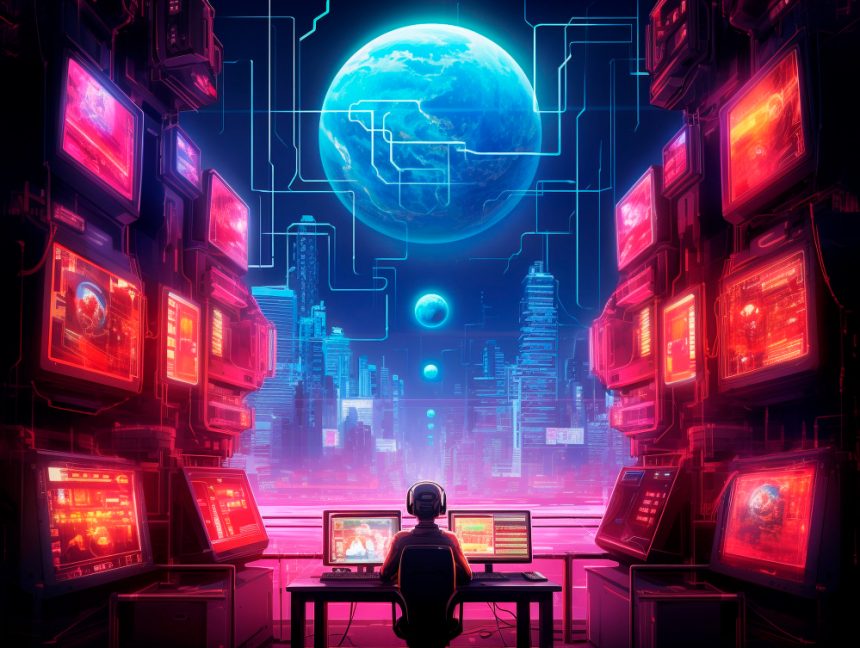Artificial Intelligence (AI) has become one of the most transformative forces in video game development, reshaping how virtual worlds are designed, experienced, and remembered. Once confined to rudimentary enemy pathfinding or predictable combat patterns, AI now orchestrates vast living ecosystems—ecosystems that evolve dynamically, react organically to player input, and simulate the intricacies of life itself.
At the core of this evolution lies the convergence of AI modeling, procedural generation, and machine learning. These technologies allow developers to transcend the limitations of hand‑crafted environments and fixed narrative paths. Instead, they build worlds that adapt and learn, forging immersive experiences that feel unique to every playthrough.
1. Procedural Generation as the Foundation of Boundless Worlds
Procedural generation—empowered by algorithms capable of creating content autonomously—has revolutionized how game environments are constructed. With AI‑driven procedural tools, developers can generate terrain, flora, and architecture that shift seamlessly in scale and form. The worlds of No Man’s Sky, Minecraft, and Starfield demonstrate this procedural breadth: mountains rise where physics would dictate, caves wind naturally through the planet’s geology, and ecosystems emerge from algorithmic rules inspired by actual ecological dynamics.
AI adds a critical layer to this process by analyzing data sets from the real world—such as topographical maps or environmental patterns—and synthesizing them into plausible digital analogues. This enables game landscapes to feel simultaneously realistic and novel, inviting exploration while maintaining a cohesive internal logic.
2. Behavior Modeling and the Rise of Intelligent NPCs
AI’s influence extends far beyond terrain generation into the psychological core of gaming—its characters. Modern non‑player characters (NPCs) are no longer static entities following pre‑written scripts. Through advanced behavior modeling, machine learning, and natural language processing, these digital actors respond with increasing nuance to player actions.
Games such as Red Dead Redemption 2 or The Last of Us Part II illustrate this complexity—where NPCs exhibit micro‑reactions to environmental shifts, express emotions through contextual dialogue, and form dynamic relationships influenced by moral decisions. Behind the scenes, AI systems track social hierarchies, memory states, and adaptive goals, enabling characters to “remember” previous interactions and alter their behavior accordingly.
Moreover, developers now train NPC models using reinforcement learning strategies—allowing AI entities to “learn” combat techniques, navigation routes, or negotiation tactics in real time rather than relying solely on scripted instructions. The result is a player experience that feels spontaneous, unpredictable, and deeply engaging.
3. Environmental Adaptation and Dynamic Ecosystems
One of AI’s most compelling capabilities in world‑building lies in creating ecosystems that mimic real‑world interdependence. AI‑driven simulations can manage hundreds of variables simultaneously, from animal migration and vegetation growth to weather cycles that influence gameplay mechanics.
A striking example can be found in survival or open‑world role‑playing games, where environment and behavior intertwine. A player killing too many predators might cause herbivore populations to explode, transforming the local environment and altering resource availability. Temperature, rainfall, and even time of day evolve dynamically, not through scripted changes but through AI‑regulated systems that adapt to in‑game conditions. Such details enrich world cohesion, imbuing it with a sense of natural cause and effect.
4. Machine Learning: Continuous Refinement and Player Personalization
Machine learning has taken AI integration further by making video game worlds responsive not just to actions, but to habits. By analyzing a player’s behavior—combat style, exploration tendencies, moral choices—AI systems can subtly tailor in‑game events, challenges, and character interactions.
Personalized narrative cues and adaptive difficulty systems contribute to a distinct emotional resonance, ensuring that no two playthroughs are identical. Developers also employ predictive analytics to forecast player choices, ensuring narrative threads stay coherent even as players deviate from conventional paths. These techniques blur the boundaries between authorial control and player freedom, fostering immersion that feels emergent, rather than imposed.
5. Balancing Authenticity with Creative Freedom
Despite its analytical precision, AI in gaming is ultimately an artistic tool. Developers must balance realism with imagination, ensuring that procedural and predictive systems serve creative intent rather than replace it. Machine learning can perfect texture realism, simulate authentic weather patterns, or craft human‑like dialogue—but it’s the human designer who shapes the emotional rhythm and thematic tone of those moments.
In this balance lies the beauty of AI‑enhanced design: a world both realistic and stylized, genuine yet fantastical. AI provides the scaffolding, the logic, the lifeblood of simulated ecosystems; developers, in turn, breathe soul and story into them.
The trajectory of AI in game development reveals both technological progression and philosophical expansion. Early digital worlds were static backdrops—beautiful, perhaps, but motionless without the player’s direct input. Today’s AI‑driven universes pulse with emergent life. Forests regenerate after fire; cities bustle with citizens who maintain daily routines; relationships between factions fluctuate based on collective decisions, not predetermined scripts.
AI not only generates content but sustains it through self‑regulation. The introduction of neural networks allows these environments to analyze performance data and player feedback to adjust on the fly. This form of living analytics ensures that future updates, events, and interactions feel intuitively aligned with how individuals play.
In narrative design, predictive algorithms fill a crucial role. By evaluating a player’s dialogue selections, moral outcomes, and exploration routes, AI helps writers maintain emotional continuity, preventing disjointed storytelling even in open‑ended structures. The result is a more organic narrative flow—one that resonates as though handcrafted for each individual.
Looking ahead, the integration of generative AI tools, such as text‑to‑environment or voice synthesis models, suggests the next creative frontier: games that construct story arcs, characters, and locations dynamically, guided by the player’s imagination. In essence, players become co‑authors of their digital realities.
The synthesis of procedural systems, behavioral simulation, and machine learning has elevated the artistry of game design, transforming virtual worlds into adaptive, evolving spaces that echo life’s unpredictability. As AI continues to mature, the boundary between simulation and storytelling dissolves ever further—offering experiences that are not only interactive but truly alive.
Through this ongoing marriage of data and design, intelligence and artistry, video games stand as the modern medium where technology and creativity merge most seamlessly to recreate the wonder of the real world—digitally reborn through the lens of imagination.






